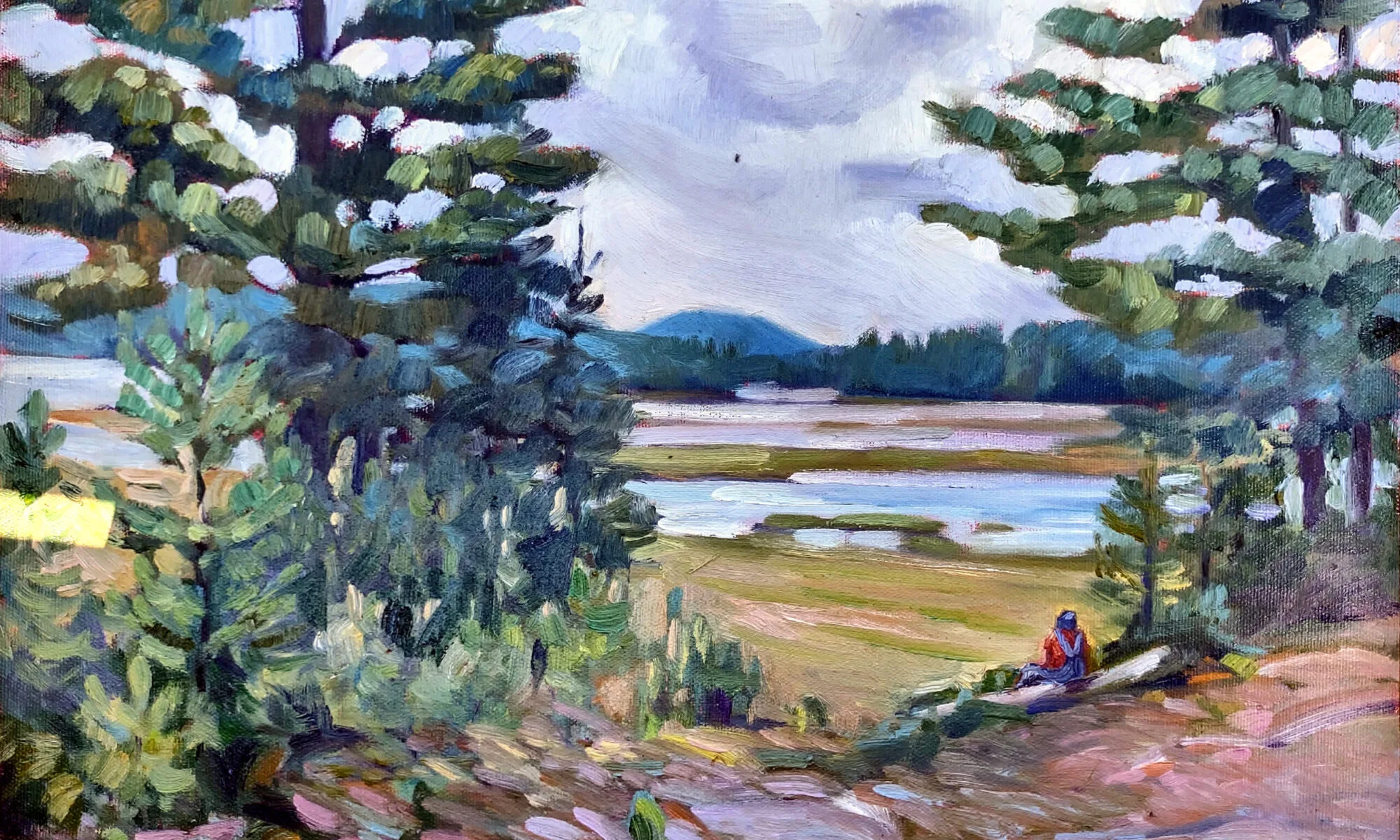Craftsmanship, passed down from artist to artist, keeps modern painting alive. That’s because painting is a craft, not an intellectual pursuit.
 |
|
Rowboats on Dock, oil on board, by Robert McCloskey
|
The other day I overheard an Old Salt telling a Young Salt that connecting links in marine chains are as strong as coil chain once the rivets are peened in. That kind of knowledge is passed from person to person in a trade. It can hardly be measured or tested.
My husband recently remarked that tradespeople get more respect in Maine than they did back in New York. I think he’s right. New York is heavy on colleges and universities. That’s a good thing, but it does result in some disregard for the highly-skilled people who hold our physical world together.
| Any flat-pack project can be rendered infinitely more complicated with the addition of glue and clamps. |
That’s ironic, since we live in a society where few people can do much of anything. A 2012 survey found that 44% of British adults were unable to assemble flat-pack furniture. Another quarter of them needed a whole day. Only 42% of Americans are confident they can change a flat tire, and 26% believe they can change the oil in their car. We need the trades.
There was a time when artists considered themselves craftsmen rather than intellectuals. That shifted with the Age of Enlightenmentand the Cult of Genius. We’re in the final stages of this thinking, where implied talent and intent trump discipline and skill.
One artist who thought of himself primarily as a craftsman was the brilliant and revered Maine illustrator, Robert McCloskey. A show of his work runs at Boston’s Museum of Fine Arts until June 18. I’d hoped to go down to see it with Bobbi Heath, but—I’m embarrassed to admit—I was home with my ailing dog. I had to be content with the photo she sent me of his Rowboats on Dock, above.
McCloskey has been in the news recently because his family recently donated Outer Scott Island, the setting for One Morning in Maine, to the Nature Conservancy.
 |
|
From Robert McCloskey: A Private Life in Words and Pictures by Jane McCloskey.
|
McCloskey thought of himself as an illustrator, not an artist. “He never sold anything [of his paintings], and never really tried,” his daughter Jane said. “It was all about the books.”
“His puppets and paintings,” she wrote, “which never won any awards, were worth as much to him as the books which won the praise of the world.”
“Don’t talk about it; do it,” was McCloskey’s credo.
Dynamic symmetry is a system of rectangular design invented by Jay Hambidge. It’s easier to visualizethan explain, since it is based on square roots. McCloskey was a fan of dynamic symmetry.
I also learned this system and sometimes still use and teach it. I got it from an ‘Old Salt’ of an artist, the figure painter Steven Assael. It’s that kind of knowledge, passed along from artist to artist, which keeps modern painting alive. In this way, we have more in common with tradespeople than we do with intellectuals. There’s nothing to be ashamed of in that.
